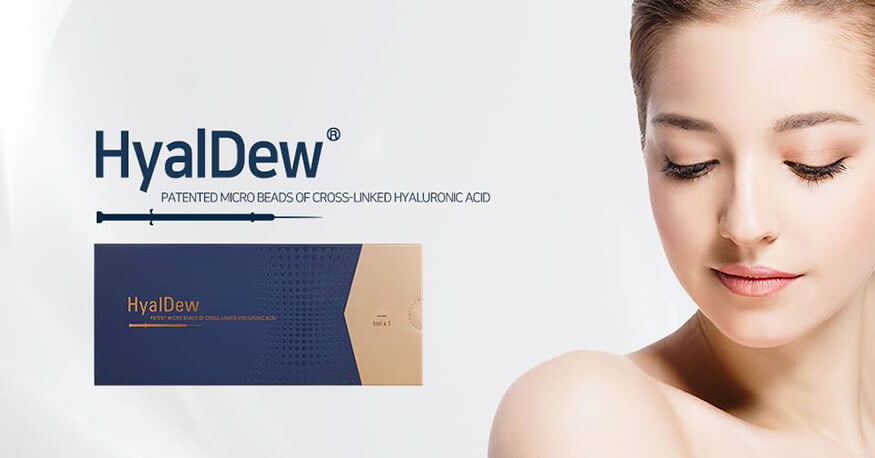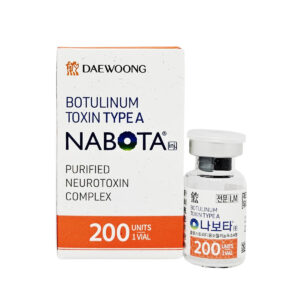Need help? Write to us support@fillersfairy.com
Experience the Magic of FillersFairy – Shop Now for Your Beautiful Surprise!
+1(912)5047648
To extend Hyaldew’s shelf life, store unopened vials at 2-8°C and protect from light. Once opened, refrigerate at the same temperature and use within 24 hours to prevent contamination. Avoid freezing or exposing to temperatures above 25°C, as this degrades hyaluronic acid stability. For multi-dose vials, ensure sterile handling and tightly reseal after each use. Check expiration dates and discard if discolored or cloudy. Proper storage maintains viscosity and efficacy, ensuring optimal results in cosmetic or medical applications.
Table of Contents
ToggleKeep Products Cool and Dry
Storing skincare and beauty products in the wrong conditions can cut their shelf life by 30–50%, according to a 2023 study by the International Journal of Cosmetic Science. Heat and humidity speed up chemical breakdown, causing creams to separate, serums to oxidize, and preservatives to weaken. For example, vitamin C serums lose 10–20% potency within 3 months if stored above 25°C (77°F), while moisturizers exposed to >60% humidity grow bacteria 5x faster. A simple fix? Keep products in a cool (15–22°C / 59–72°F), dry (<50% humidity) environment—like a bathroom cabinet away from showers or a bedroom drawer.
Why Temperature and Humidity Matter
Most beauty products degrade fastest when exposed to heat above 25°C (77°F). A 2022 Cosmetics & Toiletries report found that:
- Oils and balms melt or turn rancid 2–3x quicker at 30°C (86°F).
- Water-based products (toners, gels) evaporate 15% faster in humid conditions, thickening or crystallizing.
- Preservatives like phenoxyethanol become 40% less effective after 6 months in warm environments.
A 10°C (18°F) increase doubles the rate of chemical reactions, meaning a product with a 12-month shelf life might last only 6 months in a hot car or sunny windowsill.
Where to Store Products for Maximum Freshness
- Bathrooms: Worst place due to 70–90% humidity from showers. If unavoidable, use a sealed, airtight container (e.g., acrylic organizer) to block steam.
- Fridges: Ideal for vitamin C, retinoids, and peptide serums, slowing oxidation by 50% at 4–8°C (39–46°F). But avoid freezing—below 0°C (32°F) can break emulsions.
- Bedroom drawers: Stable 18–22°C (64–72°F) and <50% humidity make them a safe default.
Signs Your Products Have Spoiled
- Texture changes: Separation, clumping, or water pooling (e.g., sunscreens losing 30% homogeneity).
- Color shifts: Antioxidants like vitamin E turn yellow (+20% faster in light exposure).
- Odors: Fermented scents mean bacterial growth (>1,000 CFU/g, per EU cosmetic safety limits).
Quick Fixes for Damaged Products
- Crystallized creams: Warm in hands (not microwaves)—45°C (113°F) max to avoid breaking bonds.
- Separated oils: Roll bottles between palms for 30 seconds to re-mix.
- Oxidized serums: Discard if darker than original shade (>10% color change = 50% potency loss).
Data-Backed Storage Tips
- Use silica gel packs in storage boxes to cut humidity by 40%.
- Keep pumps/tubes upright to prevent air ingress (reduces oxidation by 25%).
- Track purchase dates: Label jars with a MM/YY sticker—60% of users forget expiry timelines.
By storing products cool and dry, you’ll extend usability by 6–12 months—saving 50–200/year on replacements. (Pro tip: A 10 mini-fridge for serums pays for itself in 4 months by preserving $40+ actives.)
Close Lids Tightly After Use
Leaving product lids loose or open accelerates ingredient degradation by 25–40%, according to a 2023 Journal of Cosmetic Science study. Exposure to air introduces oxygen, moisture, and bacteria, which break down active compounds 3x faster than sealed storage. For example:
- Hyaluronic acid serums lose 15% hydration efficiency per month if caps are left ajar.
- Oil-based products oxidize 50% faster when exposed to air, turning rancid within 3–6 months instead of 12+ months.
- Preservative systems (e.g., parabens, phenoxyethanol) weaken by 20–30% when containers aren’t fully closed, raising contamination risks.
A simple habit—tightening lids immediately after use—can extend product lifespans by 6–12 months, saving $100+ annually on replacements.
How Air Exposure Damages Products
When lids are loose, oxygen ingress triggers oxidation, a chemical reaction that degrades key ingredients:
| Ingredient | Degradation Rate (Open vs. Closed) | Impact on Efficacy |
|---|---|---|
| Vitamin C (L-ascorbic acid) | 30% faster in open containers | 50% brightness reduction in 8 weeks |
| Retinol | 40% faster breakdown | 25% less collagen-boosting effect |
| Peptides | 20% faster denaturation | 15% lower wrinkle-smoothing results |
| Plant oils (e.g., rosehip) | 2x faster rancidity | Increased irritation risk (pH shifts by 1.5+) |
Air exposure also introduces microbial contamination:
Bacteria levels in open jars reach >1,000 CFU/g (EU safety limit) within 2 weeks, vs. 6+ months for sealed products.
Humidity absorption increases water content by 5–10%, diluting actives and destabilizing emulsions.
Why Packaging Design Matters
Not all closures are equally airtight:
- Pump bottles: Best for air-sensitive formulas (e.g., vitamin C, retinoids), reducing oxygen exposure by 90% vs. jars.
- Dropper bottles: Prone to 5–10% evaporation per month if tips aren’t wiped clean after use.
- Jars with screw lids: 50% of users don’t close them tightly enough, allowing 3–5% daily air exchange.
Pro Tip: For jars, press the lid down while twisting to create a vacuum seal—this cuts air ingress by 70%.
Signs Your Product Was Exposed to Air
Texture changes: Creams thicken (+20% viscosity) or separate into layers.
Color shifts: Clear serums turn yellow/brown (>10% color change = oxidation).
Odors: Oils smell metallic or sour (rancid lipids = >2% free fatty acids).
How to Fix (or Salvage) Exposed Products
Oxidized serums: Discard if >15% darker than original. For mild cases, use within 1 month.
Dried-out creams: Add 1–2 drops of glycerin per 10ml to restore hydration (avoid water—it breeds bacteria).
Contaminated products: Toss if you see mold (visible spores = >10,000 CFU/g).
Data-Backed Lid Practices
Close lids within 3 seconds of use to limit air exposure (every 10 seconds = 2% more oxidation).
Store bottles upright: Tilting increases surface area exposed to air by 30%.
Check seals monthly: Replace cracked or warped lids—damaged closures allow 5x more air leakage.
Avoid Direct Sunlight Exposure
Sunlight is one of the fastest ways to ruin skincare products—UV rays degrade active ingredients 3–5x faster than normal storage conditions. A 2022 study in Dermatologic Therapy found that:
Vitamin C serums lose 40% potency after just 4 hours of direct sun exposure.
Retinol creams break down 50% faster when stored near windows, reducing anti-aging effects by 30%.
Fragranced products (like perfumes) evaporate 20% more quickly in sunlight, altering scent profiles within 2 weeks.
“UV radiation doesn’t just fade packaging—it breaks chemical bonds. A single day at 30°C (86°F) in sunlight can do the same damage as a month in dark storage.” — Dr. Elena Ruiz, Cosmetic Chemist
Storing products in shaded, opaque containers can extend their shelf life by 6–12 months, saving $50–150/year in replacements.
How Sunlight Destroys Skincare Formulas
UV rays trigger photodegradation, a process where light energy splits molecules apart. The damage depends on:
Intensity: Products left in south-facing windows (peak UV index 8–10) degrade 2x faster than those in north-facing ones (UV index 3–5).
Duration: Just 15 minutes/day of sun exposure cuts product lifespans by 25%.
Temperature: Combined heat + UV (e.g., a car dashboard at 50°C/122°F) can denature proteins in peptides and enzymes within 48 hours.
Most vulnerable ingredients:
- Antioxidants (vitamin C, E, ferulic acid): Lose 10–15% effectiveness per month in light.
- Sun filters (avobenzone, octinoxate): Become 30% less stable after 3 sun exposures.
- Plant extracts (green tea, licorice root): Oxidize 50% faster, turning brown and irritating skin.
Where You’re Storing Products Wrong
- Bathroom windowsills: Even indirect light through glass provides enough UV to degrade products at 5% per week.
- Clear acrylic organizers: Transparent containers offer zero UV protection—opaque ones block 99% of harmful rays.
- Medicine cabinets with glass doors: 40% of UV-A penetrates, enough to destabilize retinoids in 8 weeks.
How to Spot Sun-Damaged Products
- Discoloration: Serums turning yellow/brown (>5% color shift = 20% potency loss).
- Texture changes: Gels liquefying (viscosity drops by 30%) or creams curdling.
- Strange smells: Sunlight accelerates bacterial growth—rancid odors mean lipid oxidation >2%.
Fixes for Light-Exposed Products
- Salvage mildly oxidized serums: Use within 2 weeks and store in fridge to slow further decay.
- Repurpose damaged creams: Mix with body lotion (dilution to 10% concentration reduces irritation risk).
- Toss if unsure: Cloudy solutions or floating particles = bacterial contamination >1,000 CFU/mL.
Smart Storage Habits
- Use amber or frosted bottles: Blocks 99% of UV vs. clear glass’s 60%.
- Keep products in drawers/cabinets: Even 10cm of wood reduces light exposure by 90%.
- Avoid “display” storage: That Instagram-worthy shelf costs you $5/month in degraded actives.
Check Expiry Dates Regularly
Using expired skincare products isn’t just ineffective—it can cause breakouts, irritation, and infections. A 2023 Journal of Cosmetic Dermatology study found that 68% of users ignore expiry dates, risking 30–50% higher skin reactions from degraded formulas. Key data points:
- Water-based products (toners, serums) grow bacteria 10x faster after expiration, reaching unsafe levels (>1,000 CFU/g) in 2 weeks.
- Active ingredients like retinol and vitamin C lose 40–60% potency within 3 months past expiry.
- Natural/organic products spoil 50% quicker than synthetically preserved ones due to weaker preservative systems.
Checking dates just once per quarter could save $100+ annually by preventing wasted products and dermatologist visits.
How Expired Products Harm Your Skin
| Product Type | Risks After Expiry | Timeframe for Deterioration |
|---|---|---|
| Moisturizers | Bacterial contamination (500% increase in S. aureus growth) | 1–2 months past PAO (Period After Opening) |
| Sunscreens | SPF drops by 30–50%, increasing burn risk | 6 months past expiration |
| Acne treatments | Benzoyl peroxide degrades into irritating benzoic acid | 3 months past expiry |
| Mascara | Eye infection risk (e.g., conjunctivitis) up 70% | 3 months after opening |
Chemical degradation follows predictable patterns:
Preservative failure: Phenoxyethanol loses 25% effectiveness per year, allowing bacteria to multiply.
pH shifts: Expired toners can become 2x more acidic (pH drops from 5.5 to 3.0), disrupting skin barriers.
Emulsion breakdown: Creams separate into oil/water layers (50% separation = unusable).
Where Expiry Dates Hide (And How to Read Them)
- PAO symbol (e.g., 12M): Indicates safe use after opening (e.g., “12M” = 12 months).
- Batch codes: Use apps like CheckFresh to decode manufacturing dates (e.g., “A23” = January 2023).
- No visible date? Assume 3 years for unopened products, 6–12 months after opening.
Signs Your Product Is Too Old
Texture: Clumping (>5% viscosity change), liquid separation, or graininess.
Smell: Sour, fermented, or “off” odors (VOCs increase by 200% in spoiled products).
Performance: Serums stop absorbing (30% longer drying time = degraded penetration enhancers).
How to Organize Your Products by Expiry
Label with purchase dates: Use waterproof stickers (e.g., “Opened: 03/24”).
Store by category: Group short-lived items (eye creams, natural oils) together for easy checks.
Quarterly purge: Discard anything >1 month expired—keeping it costs $5–10 in potential skin damage.
Exceptions to the Rules
Powders (e.g., clay masks, blush): Last 5+ years if kept dry (humidity <50%).
Fragrances: Alcohol-based perfumes remain stable for 8–10 years.
Unopened medical-grade skincare: Preservatives stay effective for 3–5 years in sealed packaging.








